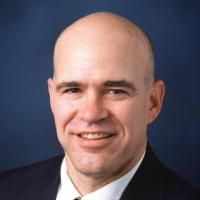Persistent anthropogenic legacies structure depth dependence of regenerating rooting systems and their functions
Date
2020-02-01
Journal Title
Journal ISSN
Volume Title
Repository Usage Stats
views
downloads
Citation Stats
Abstract
© 2020, Springer Nature Switzerland AG. Biotically-mediated weathering helps to shape Earth’s surface. For example, plants expend carbon (C) to mobilize nutrients in forms whose relative abundances vary with depth. It thus is likely that trees’ nutrient acquisition strategies—their investment in rooting systems and exudates—may function differently following disturbance-induced changes in depth of rooting zones and soil nutrient stocks. These changes may persist across centuries. We test the hypothesis that plant C allocation for nutrient acquisition is depth dependent as a function of rooting system development and relative abundances of organic vs. mineral nutrient stocks. We further posit that patterns of belowground C allocation to nutrient acquisition reveal anthropogenic signatures through many decades of forest regeneration. To test this idea, we examined fine root abundances and rooting system C in organic acid exudates and exo-enzymes in tandem with depth distributions of organically- and mineral-bound P stocks. Our design permitted us to estimate C tradeoffs between organic vs. mineral nutrient benefits in paired forests with many similar aboveground traits but different ages: post-agricultural mixed-pine forests and older reference hardwoods. Fine roots were more abundant throughout the upper 2 m in reference forest soils than in regenerating stands. Rooting systems in all forests exhibited depth-dependent C allocations to nutrient acquisition reflecting relative abundances of organic vs. mineral bound P stocks. Further, organic vs. mineral stocks underwent redistribution with historic land use, producing distinct ecosystem nutritional economies. In reference forests, rooting systems are allocating C to relatively deep fine roots and low-C exudation strategies that can increase mobility of mineral-bound P stocks. Regenerating forests exhibit relatively shallower fine root distributions and more diverse exudation strategies reflecting more variable nutrient stocks. We observed these disparities in rooting systems’ depth and nutritional mechanisms even though the regenerating forests have attained aboveground biomass stocks similar to those in reference hardwood forests. These distinctions offer plausible belowground mechanisms for observations of continued C sink strength in relatively old forests, and have implications for soil C fates and soil development on timescales relevant to human lifetimes. As such, depth-dependent nutrient returns on plant C investments represent a subtle but consequential signal of the Anthropocene.
Type
Department
Description
Provenance
Subjects
Citation
Permalink
Published Version (Please cite this version)
Publication Info
Hauser, E, DD Richter, D Markewitz, Z Brecheisen and SA Billings (2020). Persistent anthropogenic legacies structure depth dependence of regenerating rooting systems and their functions. Biogeochemistry, 147(3). pp. 259–275. 10.1007/s10533-020-00641-2 Retrieved from https://hdl.handle.net/10161/21220.
This is constructed from limited available data and may be imprecise. To cite this article, please review & use the official citation provided by the journal.
Collections
Scholars@Duke

Daniel D. Richter
Richter’s research and teaching links soils with ecosystems and the wider environment, most recently Earth scientists’ Critical Zone. He focuses on how humanity is transforming Earth’s soils from natural to human-natural systems, specifically how land-uses alter soil processes and properties on time scales of decades, centuries, and millennia. Richter's book, Understanding Soil Change (Cambridge University Press), co-authored with his former PhD student Daniel Markewitz (Professor at University of Georgia), explores a legacy of soil change across the Southern Piedmont of North America, from the acidic soils of primary hardwood forests that covered the region until 1800, through the marked transformations affected by long-cultivated cotton, to contemporary soils of rapidly growing and intensively managed pine forests. Richter and colleagues work to expand the concept of soil as the full biogeochemical weathering system of the Earth’s crust, ie, the Earth’s belowground Critical Zone, which can be tens of meters deep. The research examines decadal to millennial changes in the chemistry and cycling of soil C, N, P, Ca, K, Mg, and trace elements B, Fe, Mn, Cu, Be, Zr, and Zn across full soil profiles as deep at 30-m. Since 1988, Richter has worked at and directed the Long-Term Calhoun Soil-Ecosystem Experiment (LTSE) in the Piedmont of South Carolina, a collaborative study with the USDA Forest Service that quantifies how soils form as natural bodies and are transformed by human action, and a study that has grown to become an international model for such long-term soil and ecosystem studies. In 2005, Richter and students initiated the first comprehensive international inventory project of the world’s LTSEs, using an advanced-format website that has networked metadata from 250 LTSEs. The LTSEs project has held three workshops at Duke University, NCSU's Center for Environmental Farming Systems, and the USDA Forest Service's Calhoun Experimental Forest and Coweeta Hydrologic Laboratory, hosting representatives from Africa, Asia, Australia, Europe, and the Americas. Richter's 60-year old Long Term Calhoun Soil and Ecosystem Experiment is linked to similar experiments and platforms around the world via the ‘Long-Term Soil-Ecosystem Experiments Global Inventory’, assembled by Dan Richter, Pete Smith, and Mike Hofmockel."He is an active member of the International Commission on Stratigraphy’s Working Group on the Anthropocene. Richter has written in the peer-reviewed literature about all of these projects, and in November 2014 his soils research at the Calhoun and his soils teaching were featured in Science magazine.
Unless otherwise indicated, scholarly articles published by Duke faculty members are made available here with a CC-BY-NC (Creative Commons Attribution Non-Commercial) license, as enabled by the Duke Open Access Policy. If you wish to use the materials in ways not already permitted under CC-BY-NC, please consult the copyright owner. Other materials are made available here through the author’s grant of a non-exclusive license to make their work openly accessible.
